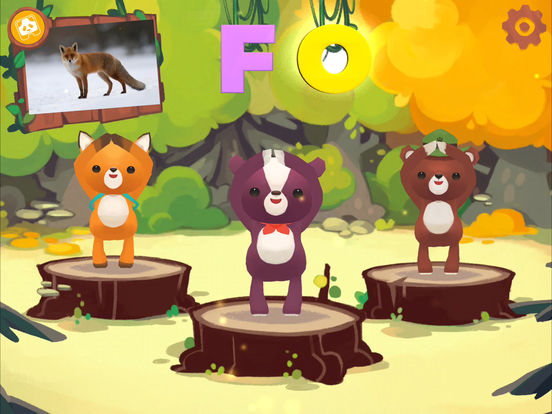The following is a client guest blog post from Square Panda, for whom we recently developed Square Panda Bubbles, Square Panda Monster Rhymes and Square Panda Jiggity Jamble.
Have you ever danced to learn a new letter of the alphabet? Research shows that employing multiple senses may have significant benefits for learning new skills. Multisensory learning involves two or more senses within the same activity. At Square Panda, we aim to capitalize on research on multisensory learning as well as on the newest digital technology to develop a product that is highly effective for teaching early literacy.
Why do we believe in multisensory teaching?
For one, educators have long incorporated multisensory training into their learning curricula resulting in some of the most successful teaching philosophies today [1, 2]. Secondly, many of the most popular intervention methods for reading disabilities, such as the Orton-Gillingham approach, heavily rely on teaching early literacy skills using multisensory methods [2]. Thirdly, research shows that even adults do much better learning new auditory-visual associations when they can touch the objects to be learned in addition seeing and hearing them [3, 4]. It is this ‘bond effect’ of touch that we leverage at Square Panda. When playing with our games, children not only get to see letters on the screen and hear the sounds they make, but also get to interact with our physical letters on the playset. Incorporating the ‘physical’ experience into digital learning may be particularly important for young readers as they can scaffold the understanding of more abstract symbols [5].
But the question is: why are multisensory teaching methods better for learning than other types of methods?
Think about it: learning in natural settings almost always occurs in a multisensory environment. When young children explore the world around them, they see, hear, touch and smell the object of interest—they move it through space and gather feedback from their body movement. The human brain has evolved to process multisensory information and integrate it into a coherent percept using special cues. These cues include information about the time, space and the content of the signals to be processed [6]. When children first learn about the alphabet, they need to understand that letters represent sounds and can be combined to form words and sentences that carry meaning. Brain studies have shown that there are areas in the human brain that do just that: they get activated if a visual letter and a speech sound match and they get de-activated when they do not match [7].
Before learning to read, however, or when kids struggle with reading, these same areas do not activate or do not activate to the same extent [8]. So what can we do to help get these particular brain regions do their job? Research suggests that one thing we may be able to do is provide the learning brain with as many sensory cues as possible to signal what letter goes with what sound. This is why we at Square Panda believe that seeing a letter, hearing its sound and touching the letter is better than any one of these experiences in isolation. We employ multisensory training protocols because we suspect they are more effective for learning. Ultimately, we want to let children learn by encouraging them to do what they do best: investigate, explore and discover.

References:
1. Montessori, M. (1967). The Absorbent Mind. New York: Holt, Rinehart and Winston.
2. Birsh, J. (1999). Multisensory Teaching of Basic Language Skills. Baltimore: Paul H. Brookes Publishing Co.
3. Fredembach, B., de Boisferon, A. H., Gentaz, E. (2009). Learning of Arbitrary Association between Visual and Auditory Novel Stimuli in Adults: The “Bond Effect” of Haptic Exploration. PLoS ONE, 4, e4844.
4. Bara, F., Gentaz, E., Colé, P., Sprenger-Charolles, L. (2004). The visuo-haptic and haptic exploration of letters increases kindergarten-children’s understanding of the alphabetic principle. Cognitive Development, 19, 433-449.
5. Uttal, D., Liu, L., DeLoache, J. (1999). Taking a hard look at concreteness: Do concrete objects help young children learn symbolic relationships? In L. Balter & C.S. Tamis-LeMonda (Eds), Child Psychology: A Handbook of Contemporary Issues (p.177-192). Philadelphia: Psychology Press/Tayler & Francis.
6. Shams, L., & Seitz, A. R. (2008). Benefits of multisensory learning. Trends in Cognitive Sciences, 12, 411-417.
7. Van Atteveldt, N., Formisano, E., Goebel, R., Blomert, L. (2004). Integration of Letters and Speech Sounds in the Human Brain. Neuron, 43, 271-82.
8. Blau, V., Reithler, J., van Atteveldt, N., Seitz, J., Gerretsen, P., Goebel, R., Blomert, L. (2010). Deviant processing of letters and speech sounds as proximate cause of reading failure: a functional magnetic resonance imaging study of dyslexic children. Brain, 133, 868-79.